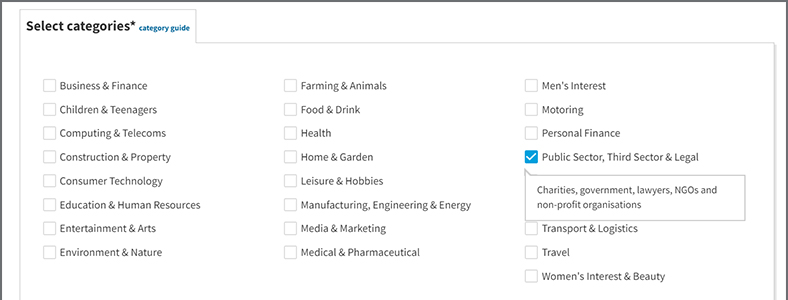Getting what you want from the Journalist Enquiry Service – The Dos and Don’ts

The Journalist Enquiry Service has been running for over 20 years. During that time, it has helped the UK media – journalists, broadcasts, and more – to fulfill thousands of requests, helping them get the information they need from PRs with the right connections.
If you are just starting out in journalism, or haven’t heard of us before, then you might be wondering what you need to do (and not do) when using the service to make sure that your own request is successful. Below, are a few examples of what helps to make an enquiry really stand out and get results, as well as some of the pitfalls that could stop you from getting the facts you need.
If you’ve followed all the ‘dos’ but would still like an extra hand with boosting your results, drop the Journalist Enquiry Service team a line at help@responserouce.com or have a chat with our community manager (that’s me!) via email, andrew.strutt@responsesource.com or on Twitter @RS_Strutty.
Do – chose your category/categories carefully and make sure they relate as closely to your request as possible.
Don’t – tick all the categories to reach all our PR clients to get more responses.
The category selection choice can often be the most difficult part of filling out the Journalist Enquiry form. If you pick too few, you might not reach the PRs you need. Too many, and you might get a lot of irrelevant responses and have to wade through your inbox to find the one quote or case study that you wanted.
Generally, enquiries are more successful when they have fewer categories, chosen to fit as closely with your topic as possible. For example: ‘I’m looking for a lawyer who is an expert in family law and what happens with custody of children’ – you would select the Public Sector, Third Sector & Legal category, but might also be tempted to choose Children & Teenagers and Men’s Interest and Women’s Interest. In this case, just the Legal category would be the best selection – any PRs with those types of client would likely subscribe to only the specific category – adding in the others could attract irrelevant replies.

It’s rare that a journalist will select all categories and quite often when they do, it isn’t necessary. There are some occasions though when ticking all the categories can be beneficial. For example, ‘I’m looking for a celebrity to interview for my column on what a typical weekend is for them’. While the Arts & Entertainment category is the most relevant, PR clients from all fields could have a celebrity they represent. By selecting all the categories in this case, you might get opportunities to interview celebrities that you wouldn’t normally have access to.
Do – be specific
Don’t – send anything too speculative
PRs, like journalists, are often pressed for time, so if you can be specific in your request, and concise too, this is really helpful and is likely to get you useful contributions for what you’re working on. For example, ‘Looking for a financial advisor/expert to comment on the Spring budget, 100 words needed’ – this quickly and easily tells a PR what you need, how long it should be and what news story its covering.
If you send an enquiry with anything too open to interpretation, then the PR might not know what exactly it is that you want, and either not get in contact, or offer up information/products that aren’t what you need at all. For example, ‘Would like to know what is going to sell well at Christmas.’ This is a very open-ended question and could cover anything from kid’s toys to garden furniture. Unless you’re happy to receive a range of responses like this – perhaps as you’re fleshing out the focus on your piece – it would help here to be a bit more specific and provide some more detail.
Do – give as much detail in your enquiry as possible, especially for complicated subjects
Don’t – write a line or two for something that needs substantial and considered responses
The more information you can provide on what you need, the easier it is for others to understand. As we saw in the example in the last point, more detail on what types of product would help make that enquiry likely to be more successful. There is no limit on how many words you can include within the ‘Expertise sought’ section so you can write as much as you want. This is particularly helpful for more complicated subjects, such as in computing or medical journalism, where terms or phrases might need to be explained. The PRs will then have all the information necessary to decide if they have someone or something relevant to your exact needs.
We know that journalists are under pressure, especially in terms of time when it comes to producing articles. You likely don’t have the time to write out a long request with lots of detail. However, one or two lines for a big or complicated topic area will likely lead to replies that might not be the most helpful for this specific piece.
Do – give examples of previous work or features
Don’t – presume that they will know your work
Hundreds of media professionals use the Journalist Enquiry Service every year and while some regular users might be well known to our clients now, PRs aren’t going to remember or know everyone (as much as they would want to). That’s why it’s useful to give examples of your previous work. This can work particularly well if your request is for a recurring feature or column as the PRs can see what is likely to get included. It’s also good to link previous any gift guides, if that’s what you’re compiling, so PRs can see how you review the products and what might interest you this time.
Perhaps you’ve won an award in the past for a certain article, feel free to mention it and include a link. It shows your credentials as a journalist and gets more views on that piece of work, too. This goes for bloggers, also. If you’ve got an achievement to show off about, then go for it, especially if it’s being featured in one of Vuelio’s top ten blog rankings, for example.
Do – add in more detail about the outlet you’re working with in the About info
Don’t – leave the section blank, especially if it’s a new outlet/one not listed on our media database
Once you’ve written your request and selected your categories, tell people who you are writing for. The majority of newspapers, magazines, websites and more will be listed on our database, so will come up as an option to select. However, if for some reason we don’t have it listed, or it’s a new outlet, then you can type in the name as a ‘user added media outlet’. Underneath, you can give information on what you cover, how frequent the publication will be, who you would like to work with to give PRs all the details they need to know about your audience and how they might be able to help.
If you are a blogger using the service, then you will be prompted into giving a bit more detail, including unique users per month, your core demographic and any additional coverage the blog can offer (for example Instagram, YouTube and more). All of this information helps PRs to get the full picture on what the opportunity is for them and their clients, but most importantly, how they can help you fill, finish and file your features.
Now you have all the info on what makes a successful request on the Journalist Enquiry Service, why not send in one now by completing the form here.


